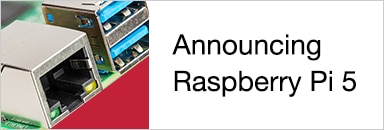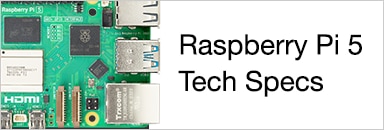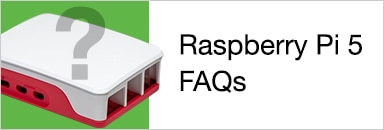Introduction
A while back a RaspberryPi.org-designed 7-inch Display with Capacitive Touch Capability7-inch Display with Capacitive Touch Capability was released; I decided to assemble it into an enclosureenclosure. This blog post documents the steps I took, including how to connect the Pi to the capacitive touch display.
The enclosure is very nicely made. It is not moulded but is instead composed from cut and heat-folded polystyrene material. Unlike some other enclosures, it has rounded/finished smooth edges and looks pretty good.
40-Pin Header Access
I wanted the enclosure to provide full access to the 40-way connector on the Pi. To achieve this, drill and cut/file the enclosure to the dimensions shown in the photo here.
The hole will provide easy access to the connector once it is finally assembled. A heat sink would be an excellent idea too.
Assembling the LCD Panel Interface Board and Pi
The LCD panel has an interface board on the back. While assembling stuff it is important that some care is taken not to accidentally unplug the touchscreen flex PCB; it is in a vulnerable position!
There are various connections on the LCD interface board but just a few are used for full functionality. The remainder are “spare”.
The first step is to get the flat flex cable (FFC) connector attached to the LCD display. The connector has opened and closed positions. To open it, the connector needs to be gently pulled from the sides. Observe the photo below, and the inset images, to see where to pull on the connector to open it. Slide in the flat flex cable (just a small amount of force is needed for this connector) about 4mm, check it is nicely squared and not at an angle, and then carefully push the connector sides back into the closed position.
After assembly inspect it to ensure that it is still all squared. It should look like the photo above (and close-up below).
The display will be powered from the Pi (i.e. a single USB supply will be plugged into the Pi when it is all complete. There are other options but this is the most straightforward approach and is compatible with recent Pi models). To achieve that, jumper cables will be used to pass power from the Pi to the display. Plug the red and black ones into the +5V and 0V(GND) connections on the display board single-in-line (SIL) header connector.
The other ends will plug onto the Pi’s 40-way header, to pins 2 and 6 respectively. Notice in the diagram here that the pin numbering is in a zig-zag fashion, with pin 1 at the lower-right, and then pin 2 is at the lower-left. The pins to use are circled in red and black on the diagram, and they are pins 2 and 6.
However, I wanted the 40-way connector kept clean and empty for future expansion. So, with warranty-voiding tools in hand, I cut the jumper cables in half and soldered the connections to the underside and then checked for shorts with a multimeter.
The connections were secured with epoxy glue and then the Pi was screwed on top. You probably want to insert the SD card just before this point (it is easier with the board unscrewed). If you have a recent Raspbian software image then the display and touch capability will work with no additional configuration needed.
The display connector on the Pi needs to be opened in a similar way as with the earlier connector, but this time pulling the connector open vertically. See the photo below.
The flat cable should slide in with zero force, and then the connector can be pushed back to the closed position. Again, check that it is in perfectly square, and not at an angle.
Fitting the Enclosure
The plastic enclosure is in two pieces. The front border part, and the rear part.
The LCD panel is asymmetrical and will therefore only fit the front border part of the enclosure in a particular orientation.
By examining the plastic, you will see that one side has a second recess which is for the LCD glass to sit inside. Take off the protective film from the front border plastic and then it should fit snugly in place. It is a millimetre-perfect fit. The LCD bezel will sit exactly flush with the front side of the plastic border part of the enclosure.
At this stage an issue was discovered. The rear of the enclosure would dig against the touchscreen flex PCB enough to force out the flex from the connector and bend it at a sharp 90 degree angle in a shear type action against the PCB. I knew I would have to hack away at the enclosure but I didn’t know by how much. The result was ugly (I couldn’t easily clamp in place, and I just used a dremel style handheld tool hence the ugliness). Anyway, this is not visible.
After this the rear part of the enclosure fitted very well and the supplied screws were used. You probably only want to gently screw it in first, and power up and check that the display works, but also the touch capability functions. If touch capability does not work then probably the orange flex PCB has become unplugged. Open up the enclosure, pull the connector to the open position, insert the flex and then push the connector into the closed position.
Upside-Down Situation
This isn’t the end of the story! The Pi foundation made a mistake when it designed the LCD; the LCD was used up-side down! It was advertised as a very high quality display yet clearly the displayed images had extremely poor viewing angles. In a later software image the default view was inverted to try to repair the issue but it meant that manufacturers now had designs which expected the LCD to be mounted the initial way. The ‘bodge’ fix was to invert the image back in software, but it leaves users with poor viewing angles. Some vendors still show clearly incorrect images on their websites; I don’t know if they have not resolved the issue or just have misleading photos. Basically if you can see the orange flex PCB at the top, then the display is in the non-optimal, incorrect orientation. Turn it such that the orange flex PCB is at the bottom and that will have correct viewing angles.
The solution for this enclosure was to create a new stand to hold it the correct way up, to benefit from the best viewing angles. Two pieces of material (I used wood; plastic might be nicer) were cut to 55x30mm (the thickness can be around 6-10mm) and then an angle was cut as shown and then epoxied into position.
A side benefit of this fix is that if desired the entire unit can also be tipped to stand on all four points, for a horizontal layout.
Summary
Although it took a few hours of effort the results could be worth it. There is easy access to the 40-way GPIO header connector, and good viewing angles.





























Top Comments